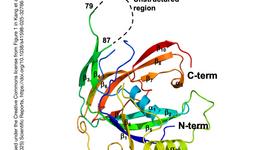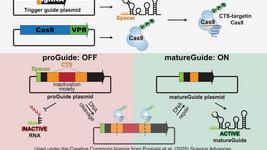Carbon
CARBON Newsletter (23 February 2022) - Your Latest News About CRISPR in AgroBio
By: Gorm Palmgren - Feb. 23, 2022
CRISPR AgroBio News (CARBON) is a new initiative from CRISPR Medicine News. CARBON will bring you the latest news on how CRISPR can shape agriculture for the future to guarantee food security in times of population growth and climate change.
To get more CRISPR AgroBio News delivered to your inbox, sign up to the free weekly CARBON Newsletter here.
Top Picks
- Powdery mildew resistance without growth penalties has been obtained in elite wheat varieties by Chinese researchers. The feat was accomplished by multiplex knockout of three MLO susceptibility genes and simultaneous activation of TMT3, thereby reversing growth defects caused by MLO knockout. In an interview with CARBON, senior-author Caixia Gao predicts that the resistant elite wheat can be grown commercially in China in just 3-4 years from now.
- Researchers in Denmark propose a new major direction in plant breeding called GEARED that is based on the CRISPR toolkit. GEARED is short for genome editing-accelerated re-domestication and it takes advantage of the fact that wild relatives of current crops often are adapted to harsh environments and have a high genetic diversity. GEARED intends to re-domesticate these wild relatives by introducing major agricultural traits using CRISPR and other upcoming technologies. The aim is both to adapt crops to environmental changes and to counter negative effects of agriculture like soil depletion.
Technical advances
- A comprehensive analysis of the effects of adenine base editors (ABEs) on DNA and RNA mutations in rice is presented by researchers in China. The authors used large-scale genome and transcriptome sequencing of plants transformed with four ABEs with different combinations of Cas9 and TadA variants. The results show that Cas proteins, TadA variants, temporal expression of ABEs, and expression levels of ABEs contribute to ABE specificity in rice.
- Scientists in France have demonstrated the successful use of prime editing in the model plant Physcomitrium patens and the tetraploid and highly heterozygous potato. In both cases, editing rates were lower than with other CRISPR-Cas9 based techniques, but in P. patens, the analysis of potential off-target mutation sites suggested a very high targeting fidelity.
- American researchers have developed a new open-source tool, CROPSR, that reduces the challenges of performing CRISPR-Cas9 knockout experiments in crops with complex genomes. CROPSR provides automated genome-wide design and evaluation of gRNA sequences for CRISPR experiments. CROPSR is particularly useful for complex, repetitive and polyploid crop genomes, but also delivers a significant increase in prediction accuracy over existing tools in non-crop genomes.
- Experiments in rice suggest that CRISPR-Cas9-induced frameshift mutations have a frame-restoring isoform in the majority of loci. Chinese researchers found that three-quarters of these isoforms are not seen in the absence of the indels, consistent with indels commonly inducing novel isoforms. The authors propose that multiple non-3n indels in any given gene are advisable to probe a gene's trait associations.
- Researchers in the USA have used CRISPR-Cas9 to obtain plastid transformation-competent oilseed rape by inactivating all nuclear-encoded, chloroplast targeted copies of acetyl-coenzyme A carboxylase 2 (ACC2). The feat was achieved by using multiple sgRNAs and Agrobacterium tumefaciens-mediated hypocotyl transformation.
- A CRISPR-Cas 9 knock-in approach for the expression of recombinant proteins in rice is presented by researchers in Taiwan. The system uses CRISPR to insert a gene of choice in intron 1 of αAmy3 that is sugar starvation-inducible and carries a signal peptide for secretion into the amyloplasts or culture medium. Gene insertion frequencies of 12.5% were obtained using the recombinant GFP reporter gene. The CRISPR-Cas 9 knock-in approach also allows for the study of endogenous promoter activity.
- For the first time, Cas9 orthologs from Neisseria meningitidis have been used for gene editing in plants. Chinese researchers used codon optimisation for monocot expression to engineer NmCas9 and demonstrated high editing efficiency in rice. Moreover, nickase mutants of NmCas9 were fused to either cytosine or adenine base editors and shown to have some potential for base editing.
- An efficient and specific CRISPR-Cas9 genome editing system for soybean has been developed by Canadian scientists. They used Agrobacterium-mediated transformation of 'half-seed' explants to transform plants with constructs targeting phytoene desaturase genes (PDS). The method yielded 75-100% mutation efficiencies with indel frequencies varying 3-100% among plants, and modifications were transmitted to T1 progenies.
Disease control
- A promising genetic method for controlling the global invasive forest pest fall webworm (Hyphantria cunea) is demonstrated by researchers in China. The method comprises the induction of male sterility through piggyBac-based transgenic RNAi targeting the seminal fluid protein serine protease 2 (Hcser2). The dominant sterile trait could be inherited in the next generation through female Hcser2 mutants and did not affect growth, development, mating behaviour or egg-laying.
- A CRISPR-Cas12a-based assay for the visual detection of African swine fever virus (ASFV) in swine blood is presented by Chinese researchers. The method employs CRISPR-Cas12a-mediated loop-mediated isothermal amplification (LAMP) and fluorescent signals to detect as little as one copy/µl within 50 minutes.
- Another CRISPR-Cas12a-mediated loop-mediated isothermal amplification (LAMP) based assay is demonstrated for the rapid detection of rice pathogens. The Chinese researchers demonstrated detection of down to 3-9 copies/µl of Xanthomonas oryzae pv. oryzae (Xoo), rice stripe virus (RSV), and rice black-streaked dwarf virus (RBSDV).
- Chinese researchers have used CRISPR-Cas9 editing in maize to achieve resistance against maize rough dwarf disease (MRDD) without agronomic penalty. The authors targeted exon 1 of ZmGDIα that has previously been shown to be required for the pathogenesis of rice black-streaked dwarf virus (RBSDV) that causes MRDD. No obvious phenotypic differences for plant growth or development was observed between ZmGDIα-edited and non-edited plants.
- French scientists have used CRISPR-based knock-out of the susceptibility gene eIF4E2 to generate cherry tomato plants resistant to some strains of pepper veinal mottle virus (PVMV). Three independent knockout alleles caused by indels in the first exon of eIF4E2 resulted in the complete absence of the eIF4E2 protein and a narrow resistance spectrum to potyvirus.
Nutritional quality
- Researchers in India demonstrate a CRISPR-based method for increasing the β-carotene content of bananas and thereby develop transgene-free biofortified fruit. The researchers targeted carotenoid cleavage dioxygenase 4 (CCD4) - which is involved in β-carotene degradation - in protoplasts and embryogenic cell lines of the low β-carotene banana cultivar Rasthali. This led to increased β-carotene accumulation in non-green tissue compared with the unedited control plants.
- Chinese researchers have created fragrant sorghum with extraordinary aromatic smell in both seeds and leaves through CRISPR-Cas9-mediated knockout of SbBADH2. The gene is involved in the biosynthesis of a major volatile compound that contributes to fragrance in rice. Animal feeding experiments showed that fragrant sorghum leaves were attractable.
- A CRISPR-Cas9 approach to promote anthocyanin accumulation in grapevine is demonstrated by researchers in China. They targeted the negative regulator of anthocyanin biosynthesis, VvbZIP36, a member of the bZIP family. This resulted in the accumulation of anthocyanin and related metabolites, while the synthesis of stilbenes (α-viniferin), lignans and some flavonols were significantly inhibited.
- Researchers in Korea have used CRISPR-Cas9 to increase the production of edible oil in the photosynthetic microalgaeChlamydomonas reinhardtii. The authors used sequential CRISPR-Cas9 RNP-mediated knock-out to generate double knock-out mutants, in which both the zeaxanthin epoxidase (ZEP) and ADP-glucose pyrophosphorylase (AGP) genes were mutated. Mutants produced 81% more oil and showed a similar increase in macular pigment productivity. Since the RNP delivery strategy avoids the integration of nucleic acids, the enriched macular pigment oil can be applied to various food products and nutraceuticals.
Reviews
- The recent development of CRISPR-Cas systems for plant genome editing is the topic of a review by Japanese researchers. Among other topics, the review highlights type I Cas10 that induces small indels and bi-directional long-range deletions ranging up to 7.2 kb in tomatoes, and type IV Cas13 that targets RNA, not dsDNA, enabling highly specific knockdown of target genes.
- A Chinese review discusses how CRISPR can be used to edit major domestication traits in Solanaceae crops, especially in minor crops with significant, but so far untapped industrial value. The review focuses on the CRISPR technique's ongoing advancements in terms of domesticated features, future prospects, and regulatory risks.
- A review by researchers in Pakistan discusses how CRISPR and other gene-editing techniques can be used to pave the way for enhanced genetic modification of soybean. The review also addresses the ethical and public acceptance issues related to gene editing and suggests solutions hereto.
- German researchers provide an overview of functional genomics resources for bryophytes that can facilitate, for example, further CRISPR genome editing attempts. Their dominant haploid gametophytic phase makes bryophytes great models for functional genomics research, but until recently the number of bryophyte genome and transcriptome resources available has been limited.
- The use of CRISPR-Cas for functional analysis and for modulating miRNA genes in plants is the subject of a review by researchers in Australia. The review summarises the evolution, biogenesis, and structure of miRNAs, as well as their interactions with mRNAs and computational models for predicting target genes. Moreover, it is discussed how the manipulation of miRNAs with CRISPR can facilitate more sustainable and publicly acceptable genetic engineering of crops.
Tags
CLINICAL TRIALS
IND Enabling
Phase I
Phase II
Phase III
Gastric Cancer and Colorectal Cancer, CRC, (NCT07166263)
Sponsors:
Base Therapeutics (Shanghai) Co., Ltd.
Sponsors:
Base Therapeutics (Shanghai) Co., Ltd.
IND Enabling
Phase I
Phase II
Phase III
Relapsed or Refractory Acute Myeloid Leukemia, AML, (NCT06541444)
Sponsors:
Base Therapeutics (Shanghai) Co., Ltd.
Sponsors:
Base Therapeutics (Shanghai) Co., Ltd.
IND Enabling
Phase I
Phase II
Phase III







